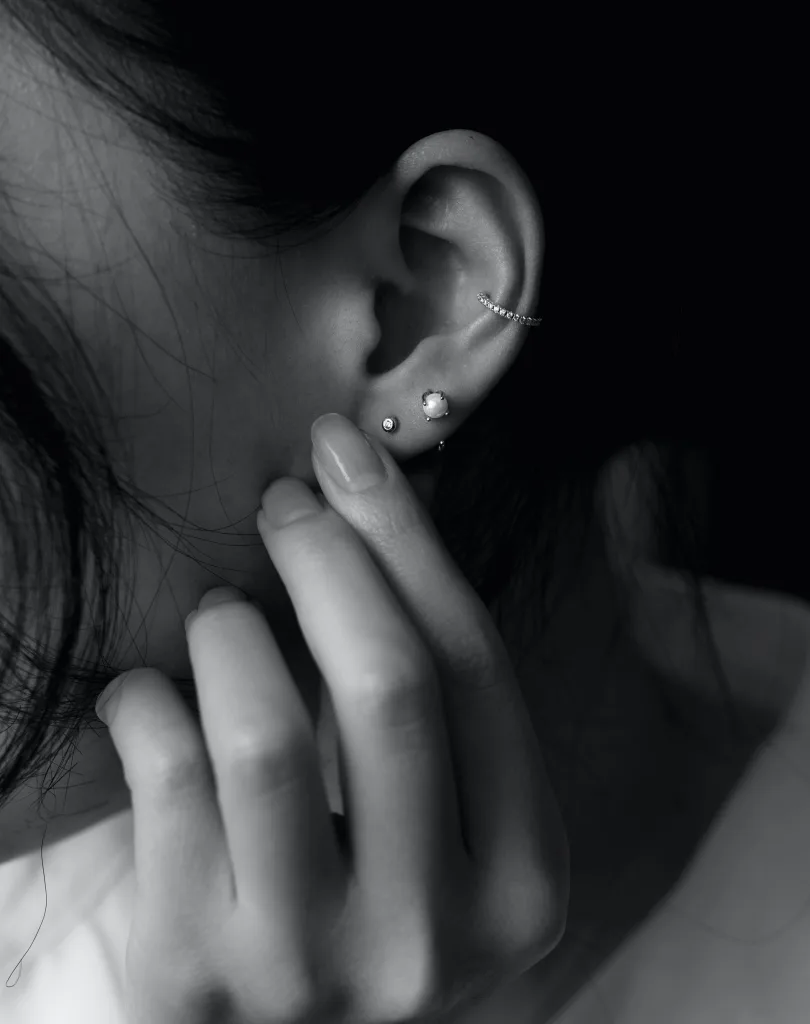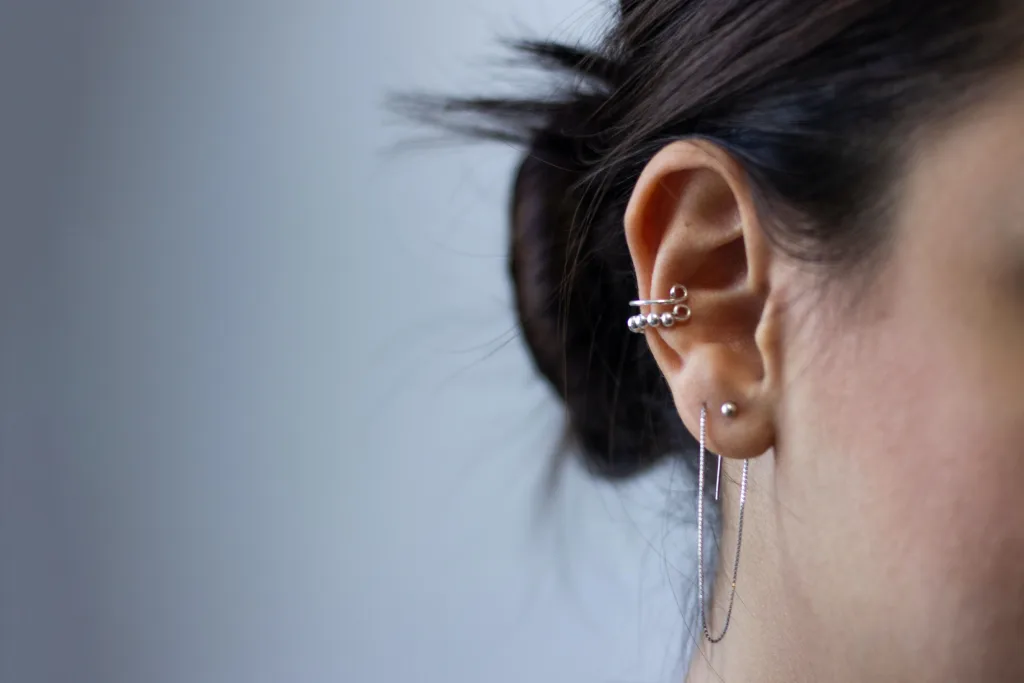Clindamycin is an antibiotic that is commonly used to treat various types of bacterial infections. It belongs to a class of antibiotics called lincosamides and works by inhibiting the growth of bacteria. One of the infections that clindamycin can effectively treat is a piercing infection.
When you get a new piercing, it is important to take proper care of it to prevent infection. However, sometimes despite your best efforts, an infection can occur. In these cases, clindamycin can be a useful treatment option.
Piercing infections can be caused by various types of bacteria, including Staphylococcus aureus and Streptococcus pyogenes. These bacteria can enter the piercing site and cause redness, swelling, pain, and discharge. If left untreated, the infection can worsen and potentially lead to more serious complications.
If you suspect that you have a piercing infection, it is important to seek medical advice. A healthcare professional will be able to examine the affected area and determine the best course of treatment. In some cases, they may prescribe clindamycin to help clear the infection.
Clindamycin is available in different forms, including oral capsules, tablets, and injections. The dosage and duration of treatment will depend on the severity of the infection and other factors such as your overall health. It is important to follow your healthcare provider’s instructions and complete the full course of treatment, even if your symptoms improve.
While clindamycin can be an effective treatment for piercing infections, it is important to note that it may not be suitable for everyone. Some individuals may be allergic to clindamycin or have underlying medical conditions that can interact with the medication. It is important to inform your healthcare provider about any allergies or medical conditions you have before starting treatment.
In addition to taking clindamycin, it is also important to practice good hygiene and care for your piercing properly. This includes cleaning the piercing site with a saline solution or an antiseptic solution recommended by your healthcare provider. Avoid touching the piercing with dirty hands and avoid swimming in pools or hot tubs until the infection has cleared.
Clindamycin can be an effective treatment for piercing infections caused by bacteria. If you suspect that you have a piercing infection, it is important to seek medical advice and follow your healthcare provider’s instructions. Proper care and hygiene are also essential for preventing and treating piercing infections.
What Antibiotic Is Best For Piercing Infection?
When it comes to treating a piercing infection, it is important to consult a healthcare professional for an accurate diagnosis and appropriate treatment. They may recommend an antibiotic based on the severity and type of infection. However, there are some common over-the-counter antibiotic creams that can be used in mild cases of piercing infections. These include:
1. Neosporin: Neosporin is a popular choice for treating minor skin infections, including piercing infections. It contains a combination of antibiotics (neomycin, polymyxin B, and bacitracin) that work to prevent bacterial growth and promote healing.
2. Bacitracin: Bacitracin is another commonly used antibiotic ointment that can be applied to a piercing infection. It works by inhibiting the growth of bacteria and can help prevent the infection from worsening.
3. Polysporin: Similar to Neosporin, Polysporin is a combination antibiotic ointment that contains polymyxin B and bacitracin. It can be effective in treating minor infections and promoting healing.
It is important to read and follow the instructions on the product label when using any over-the-counter antibiotic cream. If the infection worsens or does not improve after a few days of treatment, it is crucial to seek medical attention.

Will Antibiotics Get Rid Of Piercing Infection?
Antibiotics can be effective in treating piercing infections. Piercing infections are commonly caused by the bacteria Pseudomonas aeruginosa, so it is important to use antibiotics that specifically target this bacteria. Two commonly prescribed antibiotics for treating piercing infections are ciprofloxacin and levofloxacin. These antibiotics belong to a class called fluoroquinolones, which are known to be effective against Pseudomonas aeruginosa.
When treating a piercing infection, it is important to take the full course of antibiotics as prescribed by a healthcare professional. This helps ensure that the infection is completely eradicated and reduces the risk of antibiotic resistance. It is also important to keep the pierced area clean and follow proper aftercare instructions to prevent further infection.
In addition to antibiotics, other measures may also be recommended to help treat a piercing infection. These may include cleaning the piercing with saline solution, applying topical antimicrobial ointments, and avoiding certain activities or substances that can irritate the piercing site.
Antibiotics can be an effective treatment for piercing infections, particularly when the infection is caused by Pseudomonas aeruginosa. However, it is crucial to consult a healthcare professional for proper diagnosis and prescription of antibiotics, as different types of infections may require different treatment approaches.
How Long Does It Take For Antibiotics To Clear A Piercing Infection?
The duration for antibiotics to clear a piercing infection can vary depending on the severity of the infection and the type of antibiotic being used. Typically, antibiotics are prescribed for a course of 7 to 14 days. However, it is important to note that not all piercing infections require antibiotics.
In mild cases of infection, home care measures such as proper cleaning and care can often resolve the infection without the need for antibiotics. If the infection is more severe or if there are signs of spreading infection, such as increasing redness, swelling, or pus, then antibiotics may be necessary.
When antibiotics are prescribed, it is crucial to follow the full course as directed by your healthcare provider, even if symptoms improve before completing the medication. Failure to complete the full course of antibiotics can lead to antibiotic resistance and the infection may not be fully cleared.
If you have been prescribed antibiotics for a piercing infection, it is important to take them as directed, at the prescribed dosage and frequency. It is also crucial to complete the full course of antibiotics, even if symptoms improve. If there is no improvement after a few days of starting the antibiotics, or if symptoms worsen, it is important to contact your healthcare provider for further evaluation and guidance.
The duration for antibiotics to clear a piercing infection can vary, but it is important to follow the prescribed treatment plan and seek medical advice if there is no improvement or if symptoms worsen.
Is A Piercing Infection Bacterial?
A piercing infection is typically caused by bacteria. When you get a piercing, the skin is punctured, creating an open wound. Bacteria can enter the wound during the piercing process or through contact with unclean hands, jewelry, or surfaces. These bacteria can then multiply and cause an infection.
Here are some key points about bacterial infections in piercings:
1. Bacterial infections are the most common type of infection associated with piercings.
2. The most common bacteria that can cause infections in piercings include Staphylococcus aureus and Pseudomonas aeruginosa.
3. Bacterial infections can occur in any type of piercing, including earlobe, cartilage, nose, tongue, and body piercings.
4. Symptoms of a bacterial infection may include redness, swelling, pain, warmth around the piercing site, discharge of pus, and fever.
5. If left untreated, a bacterial infection can lead to complications such as abscess formation and spread of infection to surrounding tissues.
6. To prevent bacterial infections, it is important to follow proper aftercare instructions provided by the piercer, such as keeping the piercing clean, avoiding touching the piercing with dirty hands, and avoiding swimming in pools or hot tubs until the piercing is fully healed.
7. If you suspect a bacterial infection in your piercing, it is recommended to seek medical attention. A healthcare professional may prescribe antibiotics to treat the infection.
A piercing infection is commonly caused by bacteria entering the open wound created by the piercing. Proper aftercare and hygiene practices can help reduce the risk of bacterial infections.

Conclusion
Clindamycin is an effective antibiotic that is commonly used to treat various types of infections, including skin and soft tissue infections, respiratory tract infections, and pelvic infections. It belongs to the lincosamide class of antibiotics and works by inhibiting bacterial protein synthesis, thereby preventing the growth and spread of bacteria.
Clindamycin is available in various forms, including oral capsules, oral solution, and topical creams or gels. It is typically taken orally, with or without food, as directed by a healthcare professional. The dosage and duration of treatment may vary depending on the type and severity of the infection.
It is important to note that Clindamycin should only be used under the guidance of a healthcare professional. It is not effective against viral infections, such as the common cold or flu, and should not be used unnecessarily or for prolonged periods of time. This can contribute to the development of antibiotic resistance, which poses a significant global health threat.
Like any medication, Clindamycin may cause certain side effects. These can include gastrointestinal symptoms, such as nausea, vomiting, and diarrhea, as well as allergic reactions. It is important to seek medical attention if any severe or persistent side effects occur.
Clindamycin is a valuable and widely used antibiotic that can effectively treat a range of infections. However, it should be used judiciously and in accordance with healthcare professional guidance to ensure its optimal use and minimize the risk of antibiotic resistance.
